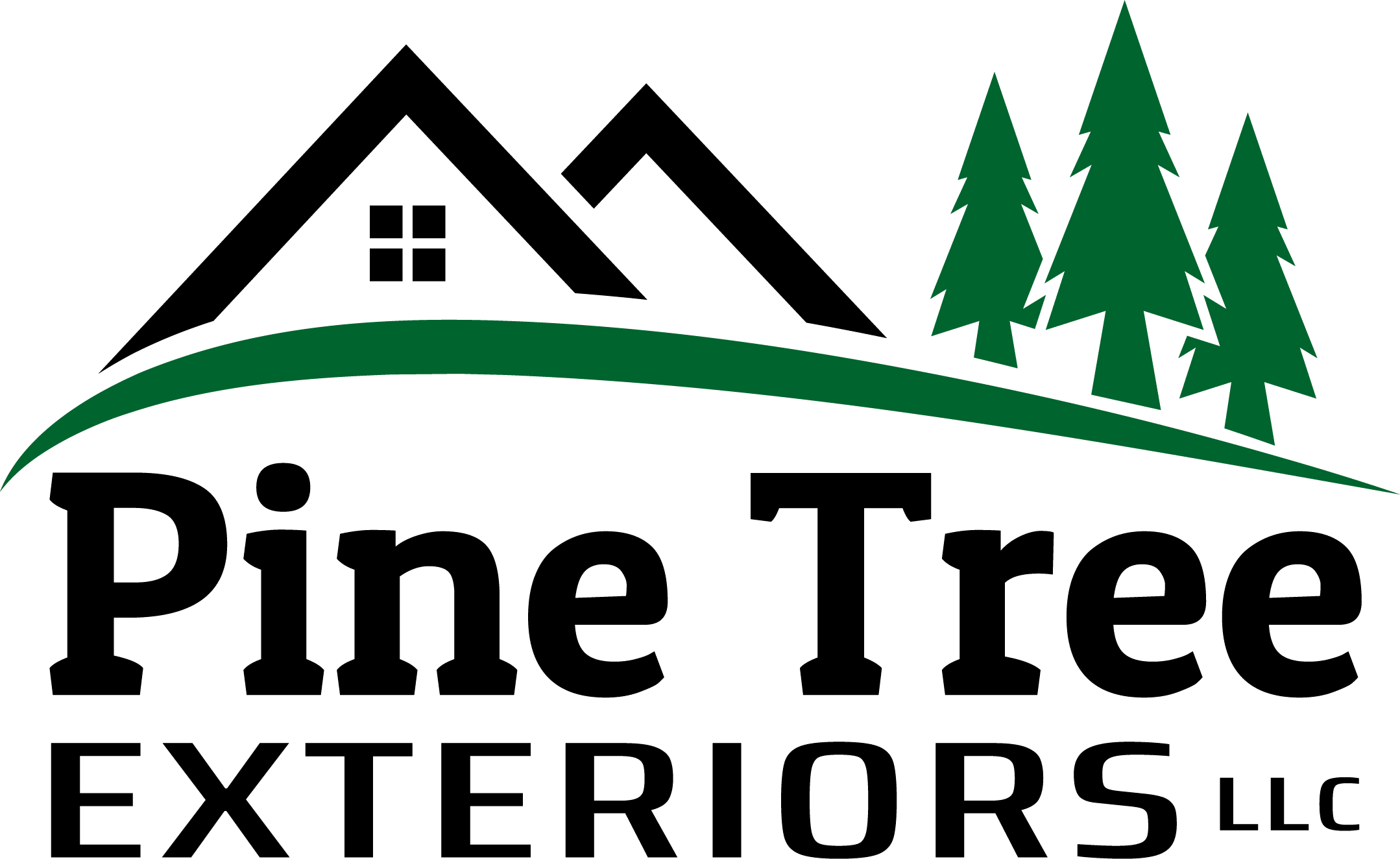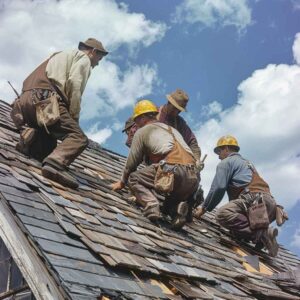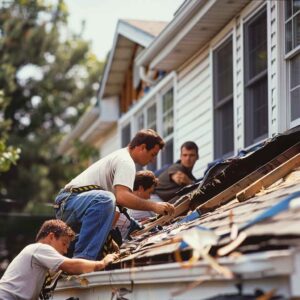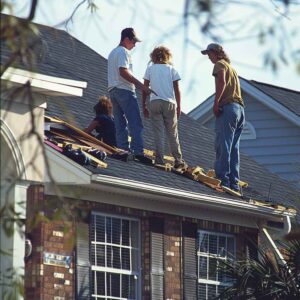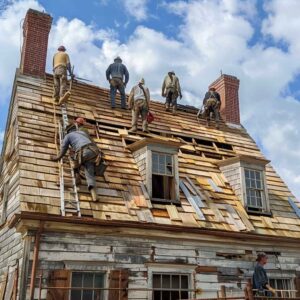In the construction of a building, the selection of roof type with the help of a roofing expert is pivotal, influencing both the aesthetic appeal and functionality of the structure.
Various common roof types have been utilized throughout history, each with its unique characteristics and advantages. From classic gable roofs to elegant mansard roofs, the options are vast and offer diverse choices for potential homeowners, architects, and builders. In this discussion, we will explore these common roof types, examining their distinctive features and benefits, ultimately shedding light on the factors influencing the selection process.
Gable Roofs
Gable roofs, alternatively termed pitched or peaked roofs, stand out as a prevalent and easily recognizable roof type in residential and commercial construction. Characterized by two sloping sides converging at a ridge to create a triangular shape, the design facilitates efficient water drainage, contributing to the popularity of gable roofs in regions experiencing substantial rainfall or snowfall. Moreover, the steep slope inherent to gable roofs offers generous attic space, fostering improved ventilation and potential storage opportunities. However, gable roofs are more susceptible to wind damage due to their shape and lack of structural support. To mitigate this, additional bracing and proper installation techniques are required. Overall, gable roofs offer a classic look, efficient water drainage, and good ventilation, but their vulnerability to strong winds should be considered when choosing a roof type.
Hip Roofs
Moving on from the previous discussion on gable roofs, we now focus on hip roofs. Hip roof construction features a distinctive design in which all sides slope gently downwards towards the walls. Here are the advantages of hip roofs:
1. Stability: The slanting sides of a hip roof enhance its stability and ability to withstand strong winds and harsh weather conditions.
2. Durability: The design of a hip roof distributes weight evenly, reducing the strain on the structure and increasing its lifespan.
3. Aesthetics: Hip roofs have a visually pleasing appearance and can enhance the overall architectural style of a building.
4. Extra Space: The sloping sides of a hip roof provide additional attic or storage space, ideal for homeowners looking for extra room.
Flat Roofs
Flat roofs are favored for residential and commercial structures and are appreciated for their streamlined and contemporary design. These roofs have a horizontal or nearly horizontal surface and offer several advantages. One advantage is that they provide additional usable space, such as rooftop gardens or recreational areas. They are also easier to install and cost less than other roofing types. However, flat roofs also have some disadvantages. They are more prone to leaks and require regular maintenance to prevent water pooling and damage. To maintain a flat roof, it is essential to remove debris, inspect for any signs of damage, and ensure proper drainage. Regular inspections and repairs can prolong the lifespan of a flat roof and prevent costly repairs down the line.
Shed Roofs
Shed roofs, or pent roofs, are popular roofing options with a single sloping surface that allows for efficient water drainage. These roofs are commonly used in modern architecture and have several design variations. Here are some shed roof designs:
1. Mono-pitch: This design features a single slope that extends from one side of the building to the other. It is simple and cost-effective.
2. Clerestory: This design incorporates a row of windows at the top of the roof to allow natural light into the space below.
3. Butterfly: In this design, two shed roofs slope toward the center, creating a butterfly-like shape. It provides a unique aesthetic appeal.
4. Sawtooth: This design consists of a series of single-sloping surfaces placed next to each other, resembling the teeth of a saw. It allows for ample natural light and ventilation.
Pros of shed roofs include their modern aesthetic, efficient water drainage, and flexibility in design. However, they may have limited attic space and require regular maintenance to prevent leaks.
Mansard Roofs
Mansard roofs, also called French roofs, are a distinctive roofing style characterized by their double slopes and steep angles. These roofs have a rich historical significance, as they were popularized by the French architect François Mansart in the 17th century. Mansard roofs became popular during the Renaissance and Baroque periods and were often used to construct grand buildings, such as palaces and mansions. Today, mansard roofs are admired for their elegant and timeless aesthetic. They have also been adapted to meet modern architectural needs. To elevate sustainability and minimize environmental impact, contemporary interpretations of mansard roofs involve integrating energy-efficient roofing materials and technologies, such as solar panels or green roofs.
“Enhance Your Home’s Appeal Today!”
Give your property a facelift. Connect with Pinetree Exteriors by calling 717-327-1745 for expert exterior services.
